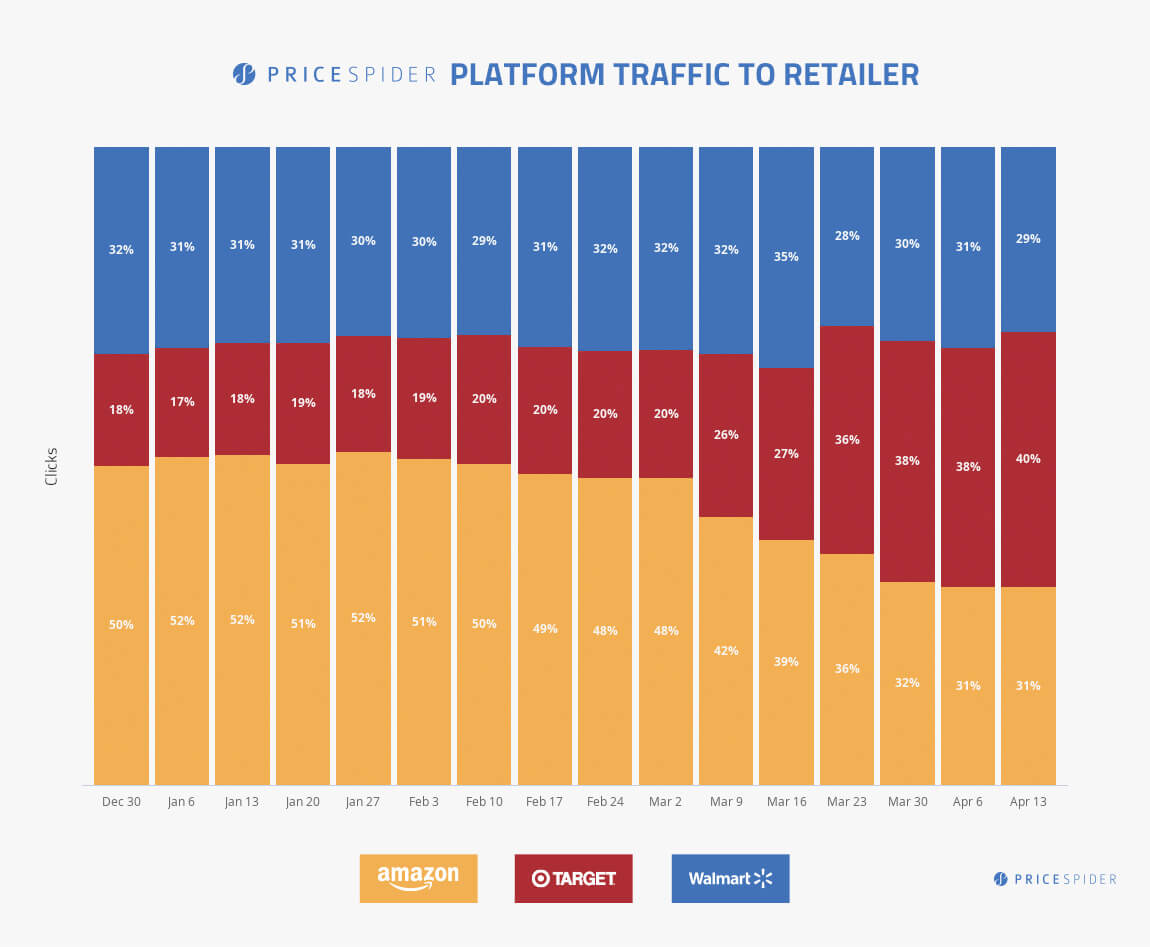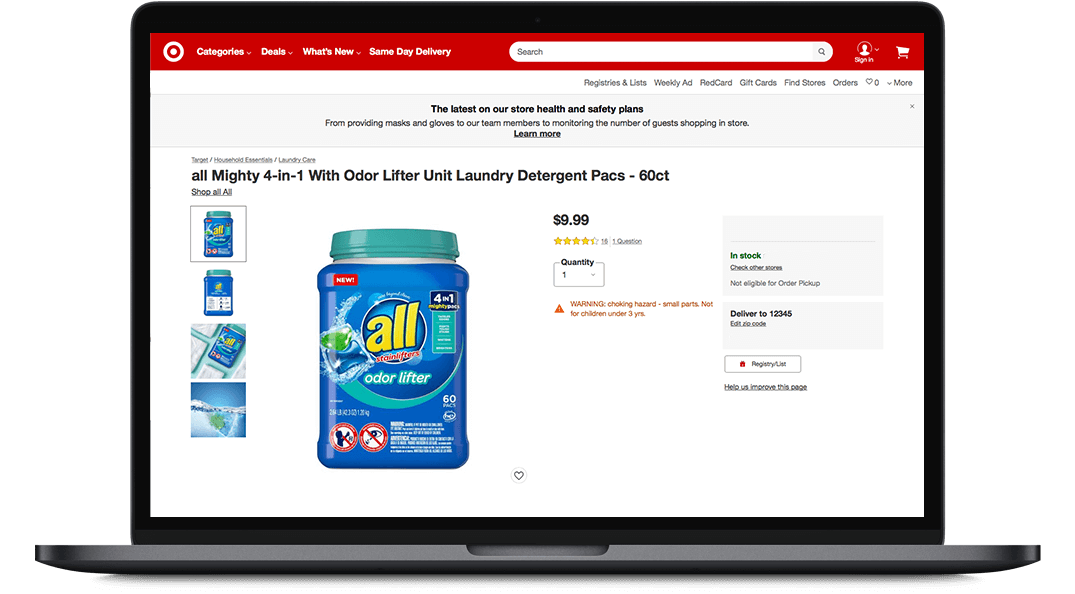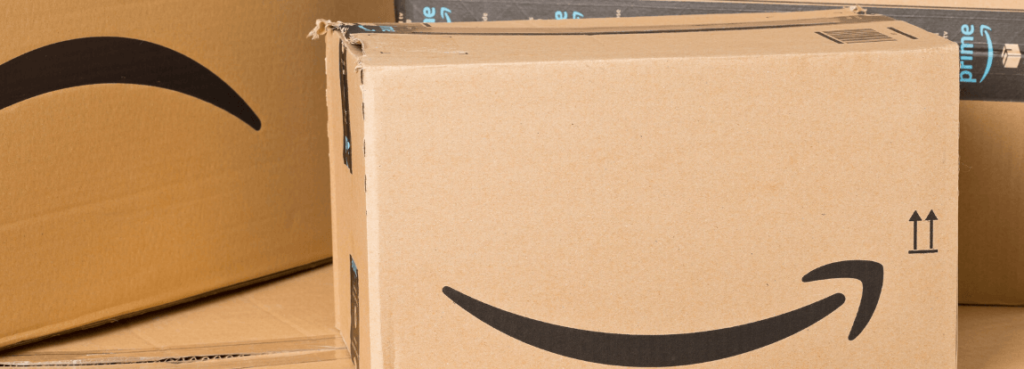If you’re an ecommerce brand selling through retailers right now, you’ve probably noticed something: Amazon sales are down. And sales through Walmart and Target are up. For years, Amazon has been the marketplace where brands could expect to see the highest volume of sales. Bar none. Their supply chain was stronger. Their incentives were better.
But as ecommerce sales reacted to stay-at-home orders and social distancing guidelines, Amazon chose to prioritize essential goods like “household staples and medical supplies,” which meant they stopped accepting other items in their warehouses until April 5. As nonessential items went out of stock, orders were delayed, and consumers used to Amazon’s usual two day shipping saw their deliveries projected to arrive weeks later.
Ecommerce brands already know this. But what you may not know is just how much two of Amazon’s largest competitors—Walmart and Target—have stepped up to fill the void.
Consumers are choosing Target more than Amazon or Walmart
Thousands of ecommerce brands use our Where to Buy buttons to drive customers to online retailers. As a result, we see how many clicks brands drive to various retailers—and how many transactions occur through them. We’ve been tracking sales and traffic throughout the Coronavirus outbreak, and over the last few weeks, Target surpassed Amazon in clicks, and Walmart caught up to within one percentage point.
If you isolate the clicks brands drove to these three retailers, here’s how it breaks down from December 30–April 13.

Amazon’s share of clicks was starting to fall off before they began delaying nonessential orders, which was likely a result of consumers simply trying to find items in stock, but it may have also been driven by the fact that people wanted to know if they’d be able to get what they needed at local brick-and-mortar stores. However, the largest, most consistent decline came after the announcement.
From March 2–April 6, Amazon’s percentage of clicks fell 16 percent, while Target’s rose 17 percent.
Keep in mind, these clicks represent what consumers are choosing from a selection of retailers on a Where to Buy button. On the one hand, consumers who have previously seen Amazon orders delayed are more likely to try another retailer on future orders. And on the other hand, brands have control over which retailers they prioritize on their Where to Buy button. Storefronts with the most prominent positions get a larger share of clicks and (usually) conversions. As brands see their products go out of stock on Amazon, they’ve likely deprioritized or removed Amazon’s placement on their Where to Buy buttons, as most of the brands on our platform do this to optimize the customer journey.
The reason this change might last
Amazon’s decision to prioritize essential items was obviously temporary. They even gave a timeline for when they would resume taking in nonessential items. And they’ve already started doing that. As brands and consumers see that items are coming back in stock, Amazon’s percentage of clicks and transactions will likely increase again—but it may not return to the dominant lead Amazon has held for years.
Target and Walmart have something that as of now, Amazon doesn’t: ubiquitous brick-and-mortar stores. Target has more than three times as many physical locations (1,800) as Amazon (497 Whole Foods Locations and 21 Amazon Go locations). And Walmart (4,700) has more than double what Target has. This enables Target and Walmart to provide a valuable buying option that has been especially appealing throughout the pandemic: buy online, pick-up in store (BOPIS).
When you shop at Target.com, BOPIS is even emphasized on the product page itself, regardless of if you’re signed into your account:

This is especially valuable when an item is in high demand, but in stock at your local store.
Amazon doesn’t have the physical presence yet to replicate this buying option nationwide, and over the last few weeks, more consumers have experienced how convenient it is. Target even lets shoppers pick up their purchase without getting out of their car. At a time when people are trying to spend as little time in public spaces as possible, these services are even more attractive than usual.
While most people have used BOPIS before, the pandemic coupled with Amazon’s temporary delays have made it the go-to buying option for more people. Additionally, Target and Walmart have demonstrated that their online shopping experiences are viable alternatives to Amazon. Target even offers same-day shipping on some items.
Brands will want to pay attention
Time will tell if the advantages of an Amazon Prime membership, the convenience of features like one-click buying, and the value of Amazon’s other offerings will be enough to overpower BOPIS. As concern about being in public ebbs and flows, the demand for BOPIS likely will, too. But as it continues to be normalized, more consumers will turn to BOPIS first—even when other options are available.
Amazon has been disruptive and innovative since its inception, and they’re not slowing down. But brands that want to maximize sales will want to pay attention to how consumers are responding to Target and Walmart right now.
Let your customers choose where and how they buy
As consumer preferences shift back and forth, it’s more important than ever that brands give their customers more buying options. Unless you only sell direct-to-consumer, there are countless paths someone could take to buy your product. A Where to Buy button lets your customers choose that path for themselves, based on their own preferences. Amazon, Target, Walmart. A sale is a sale is a sale.
Schedule a demo, and see what our Where to Buy solutions can do for your brand.

